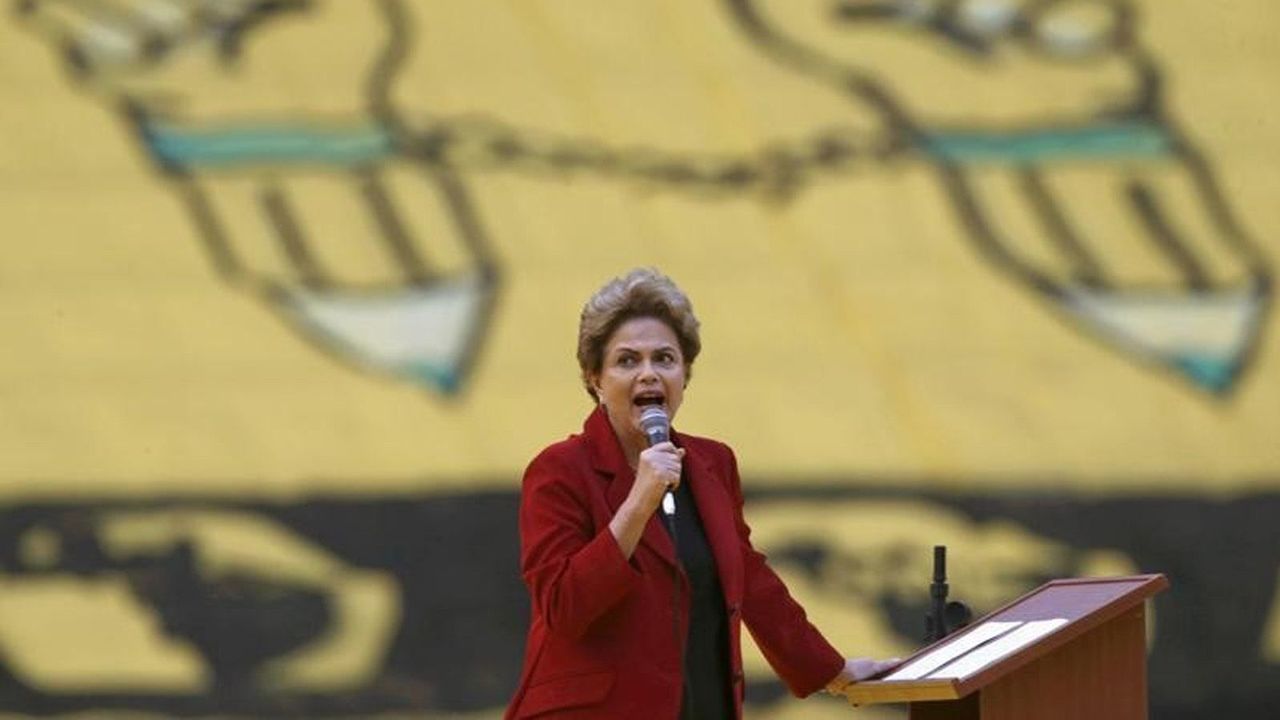
SÃO PAULO – Brazil’s political crisis appears to be coming to a head. Now that the lower house of the National Congress has voted in favor of President Dilma Rousseff’s impeachment for violating fiscal rules, the Senate’s 81 members will vote in the coming days on whether to try her.
If 42 agree, she will be suspended for up to 180 days, during which time Vice President Michel Temer will assume the presidency. If the Senate does not produce a two-thirds vote for conviction during that period, Rousseff will return to the presidency. But the most likely outcome, it seems, will be for Temer to carry out the final two years of Rousseff’s term.
Whatever happens next, Brazil is not out of the woods. Its economic situation is dire – a direct result of populist policies initiated by Rousseff’s predecessor, President Luiz Inácio Lula da Silva, and which she maintained.
The worst economic recession in 80 years
In the early 2000s, flush with cash thanks to a commodity boom, Lula’s government began to distribute subsidized credit to consumers and businesses, hold down energy prices artificially, and expand government spending at more than double the rate of GDP growth. The result was mounting public debt, which has now reached 70% of GDP, and a widening deficit, which has now reached nearly 11% of GDP.
Rather than acknowledge the problem and revise policies accordingly, Rousseff allegedly resorted to dodgy accounting tricks to enable her government ostensibly to meet its primary-surplus target without cutting social transfers, even as commodity prices collapsed. This enabled her to win reelection in 2014 – and it is propelling her toward impeachment today. (The massive corruption scandal engulfing Petrobras, the state-owned oil company, which Rousseff used to head, has not helped her case.)
But Rousseff is of course far from the only one suffering the consequences of this approach. Brazil is now facing its worst economic recession in 80 years; unemployment stands at almost 10%; annual inflation exceeds 10%; and living standards have collapsed. Though Brazilians pay 37% of GDP in taxes each year – about the same rate as Europeans – the quality of their public services remains very low.
Assuming he takes over as President, Temer will have to act fast to put the economy back on track, rebuild business confidence, and restore the people’s trust in government. It would be a daunting task for any leader, but it is especially so for one who will spend only two years in power and does not enjoy widespread popular support. For Temer, there is no room for mistakes.
Four-point agenda
His first mission will be to form a cabinet that can produce rigorous and credible economic policies and secure the needed congressional support. A four-point agenda for economic revitalization should then be implemented.
The first point of that agenda should be to fast-track infrastructure investment. This is the fastest way to revive the economy and generate employment. But Brazil desperately needs foreign capital to finance construction of roads, ports, and airports, as well as energy projects. To attract it, the government must improve transparency, simplify rules and regulations, introduce performance bonds (to guarantee the completion of projects), and abolish the cap on return on investment.
The second item on the agenda should be labor-market reform. The best approach, which would enable the government to avoid an endless political debate about which labor laws should be revoked, would be to approve a constitutional amendment that guarantees the right of workers to conclude private contracts with employers. Such a measure would reduce labor costs significantly and bring workers out of the informal sector.
Third, Temer must tackle pension reform. Though there is a consensus that the retirement age should be raised from 60 to 65, there is strong resistance to cutting benefits. Again, the government can minimize time-wasting political entanglements – this time, by focusing on the public sector. Brazil’s government currently spends roughly the same amount on 950,000 retired public servants that it spends on 28 million retired private-sector workers, meaning that the bigger problem is also the one that will be less politically difficult to address.
Finally, Brazil needs to reinsert itself into the global economy. To that end, it must revive productivity growth, expand exports, open its economy to international competition, and forge new bilateral and regional trade deals with major economic players. If Temer’s government succeeds in the first three areas, building up its credibility in the process, it will be in a strong position to fulfill these objectives, as well.
This four-point agenda is crucial to restoring Brazil’s economy and bringing public spending under control. But it will not be enough to stop the vicious boom-and-bust cycles to which Brazil has long been vulnerable. For that, Brazilians must take a hard look at the attitudes and expectations that have placed them in this situation. Real change means breaking the addiction to a paternalistic and interventionist state and supporting needed policy adjustments, even when they are unpleasant.
Brazilians still have a long way to go to eliminate corruption, reform or rescind populist policies, and create efficient and responsible state institutions. But the combination of popular indignation, courageous and independent judges, and a dynamic free press seems to be propelling the country along a promising path, as the irresponsible actions of politicians and businessmen are not only brought to light, but also punished.
By itself, Rousseff’s likely impeachment will solve nothing. But if it helps to bury beliefs and values that have been holding Brazil back, the country, to paraphrase Winston Churchill, may find itself at the end of the beginning.
(C) Project Syndicate
